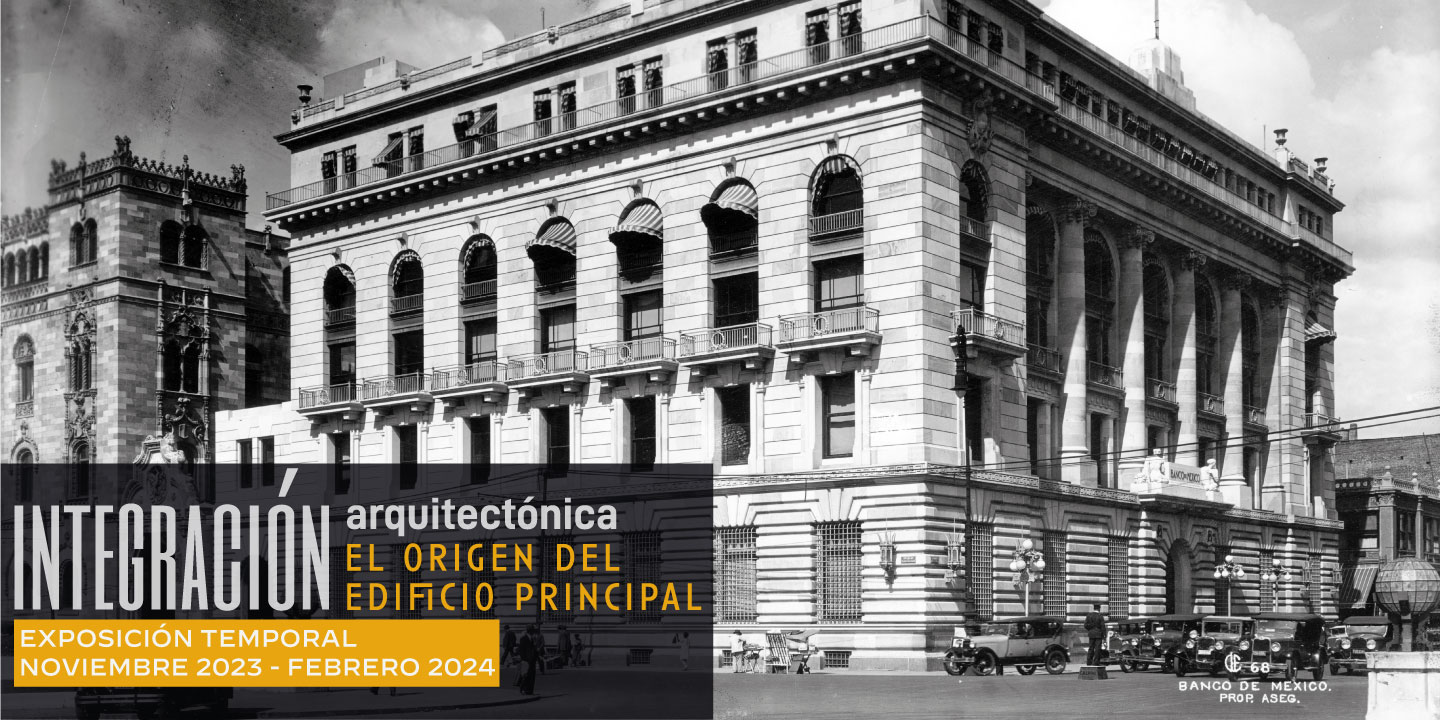

Architectural integration: the origin of the main building
Where does the history of Banco de México's architectural heritage begin?
Banco de México holds a central place in Mexico’s architectural heritage, particularly its main building, which has served as an enduring symbol of the country's monetary stability throughout its century-long history. The fusion of two distinct periods, both the Porfirian era and the post-revolutionary stage, has shaped its unique and multifaceted architectural character.
Adapting preexisting structures and integrating innovative elements have been key to achieving a balance between history and modernity— an illustration of the diverse knowledge and skills that have played a pivotal role in shaping its design and development.
This exhibition offers a comprehensive exploration of the evolution of this iconic building, highlighting its capacity to adapt and endure over time in response to the needs and visions of its users and designers. Through a combination of historical resources and contemporary testimonials, the public is invited to explore the diverse layers of meaning and legacy that define this remarkable piece of Mexican architectural heritage.
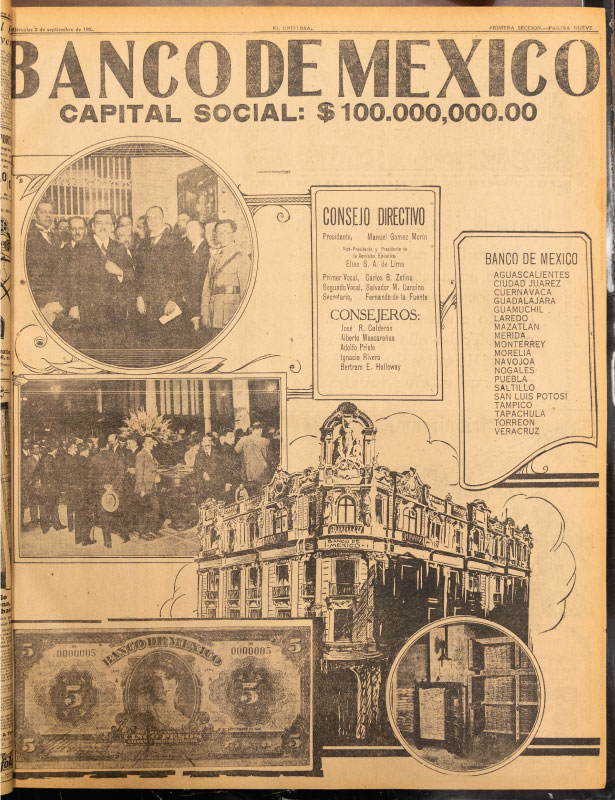
Banco de México. Capital social $100,000,000.00
El Universal. 1925
Reproducción
Acervo de la Biblioteca Miguel Lerdo de Tejada
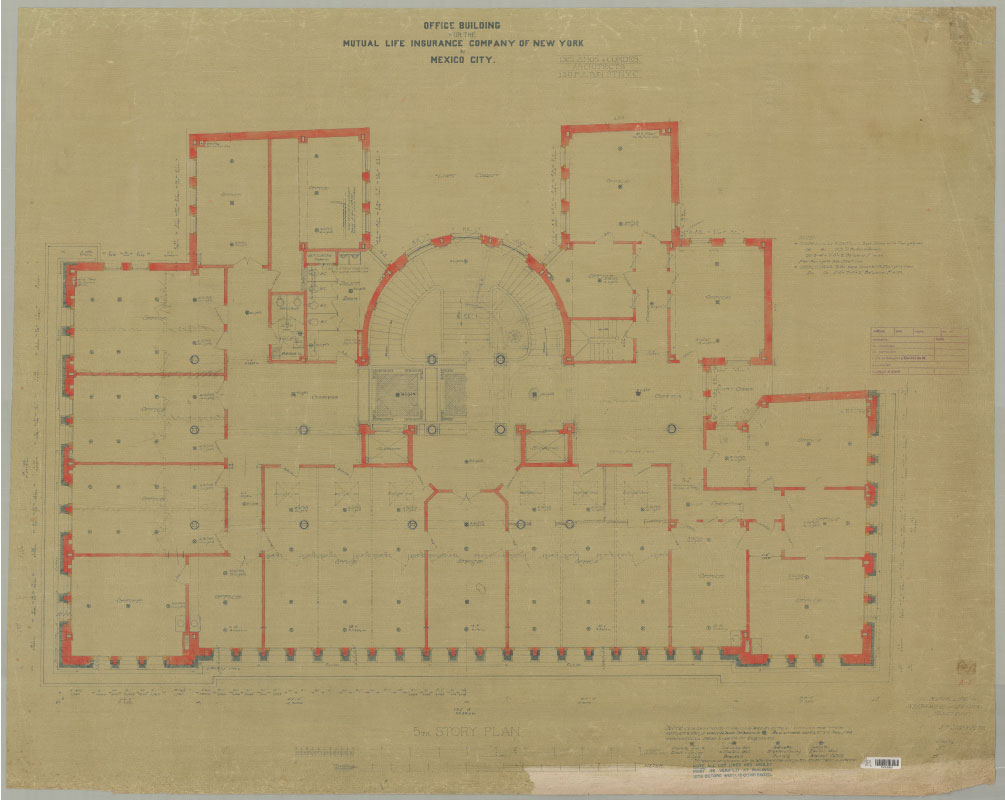
Lemos & Cordes Architects
Office Building for the Mutual Life Insurance Company of New York, Mexico City
Grafito sobre papel. 1903
Archivo Histórico Banco de México
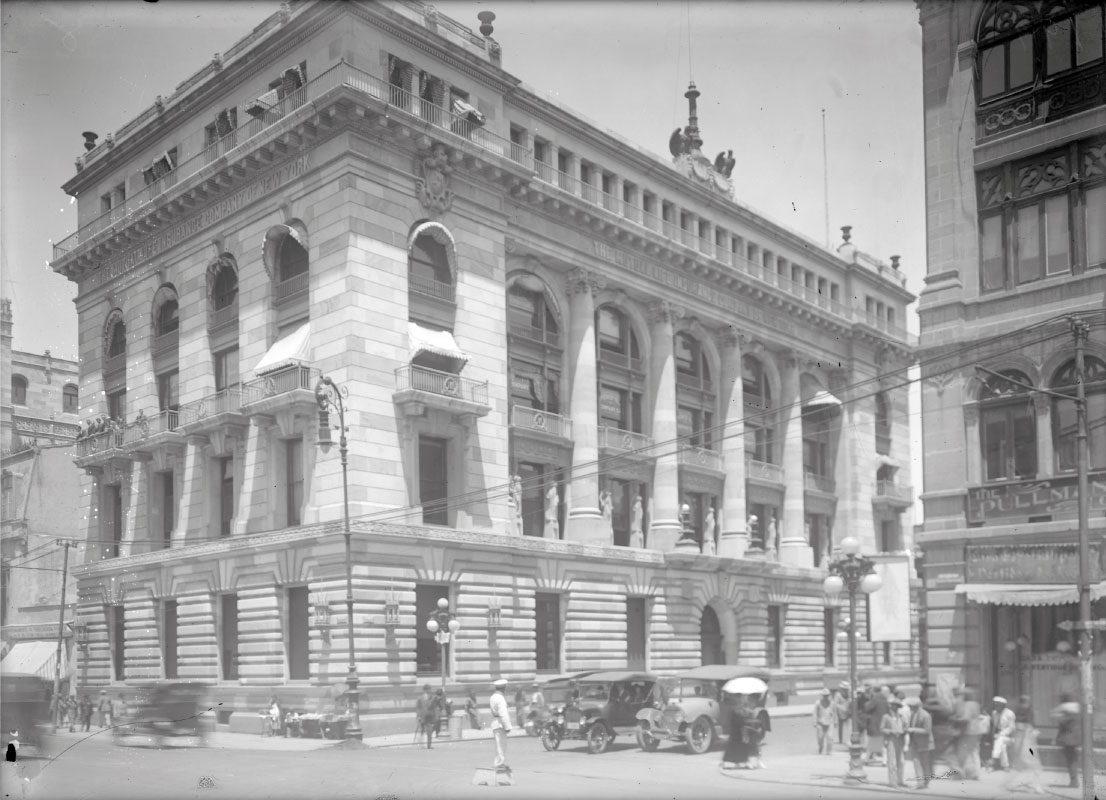
Autor no identificado
Vida cotidiana fuera del Banco de México. Vista general
Fotografía. s/f
Mediateca Digital Instituto Nacional de Antropología e Historia
The exterior, the former building, and the expansion
Following the Mexican Revolution, the federal government prioritized the repurposing of existing buildings for the establishment of Banco de México’s headquarters. The decision was made to adapt the building of The Mutual Life Insurance Company, the eclectic Porfirian architecture that reflected the cultural grandeur of the era. However, the need for space led to an extensive expansion of the original building, transforming it into a solid and robust square-shaped structure.
The former building stood out as a symbol of the successful insurance company during the Porfiriato period, distinguished by its iron skeleton, ornate facades, and spacious interior accommodating more than a hundred commercial spaces and showcasing an innovative business model of the time.
The transformation of the building, carried out by architect Carlos Obregón Santacilia, involved a meticulous reconfiguration of both the façade and the interior. This included expanding windows, incorporating new sculptures, and strategically reorganizing existing architectural elements. This project marked a radical reinvention, creating a large and adaptable space that reflected the architect's vision of modernity and functionality.
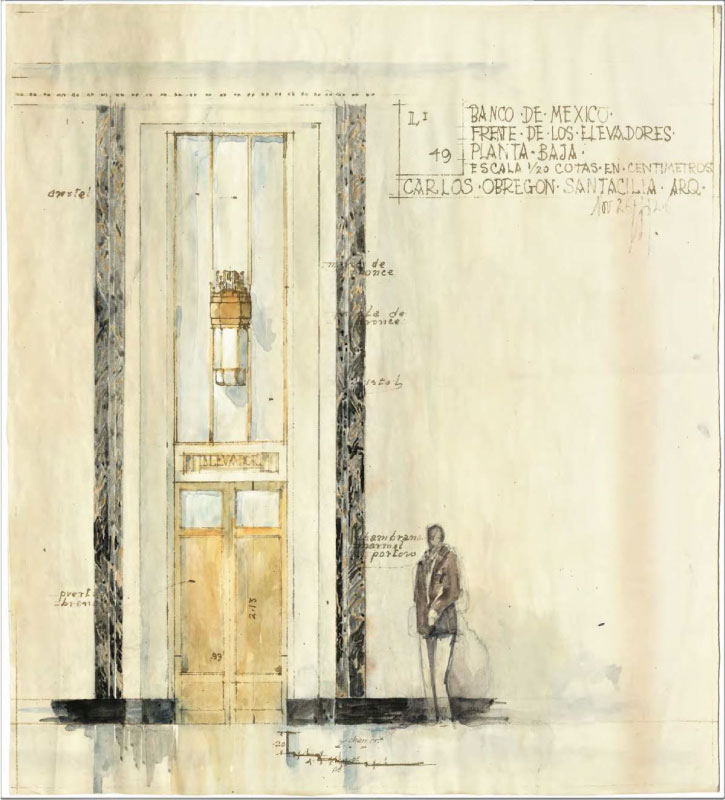
Carlos Obregón Santacilia
Frente de los elevadores. Planta baja
Acuarela. 1926
Archivo Histórico del Banco de México
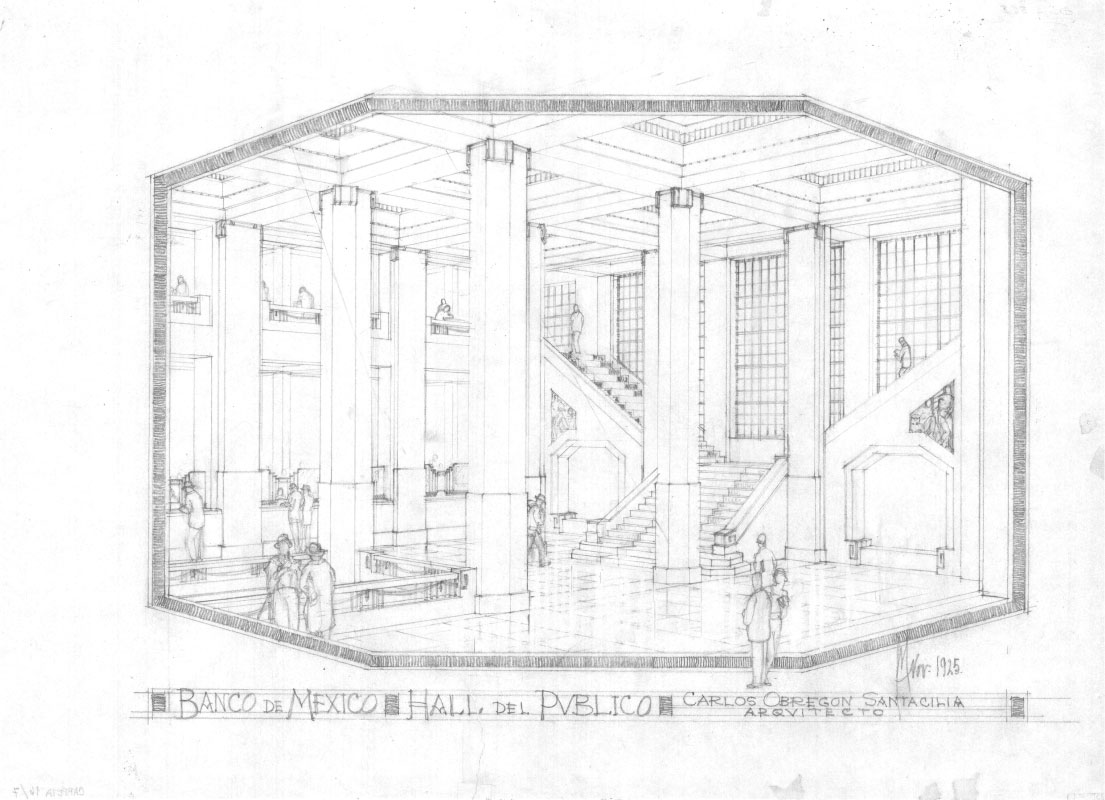
Carlos Obregón Santacilia
Perspectiva del Hall. Banco de México
Lápiz sobre papel. 1925
Dirección de Arquitectura y Conservación del Patrimonio Artístico Inmueble del Instituto Nacional de Bellas Artes y Literatura
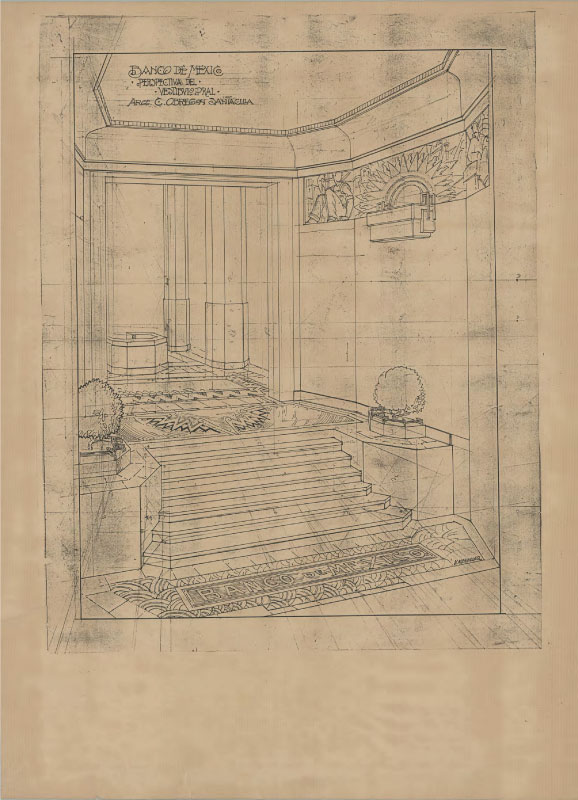
Carlos Santacilia
Detalles arquitectónicos, perspectiva del vestíbulo. Plano. Plano S/N
Xerografía. s/f
Archivo Histórico del Banco de México


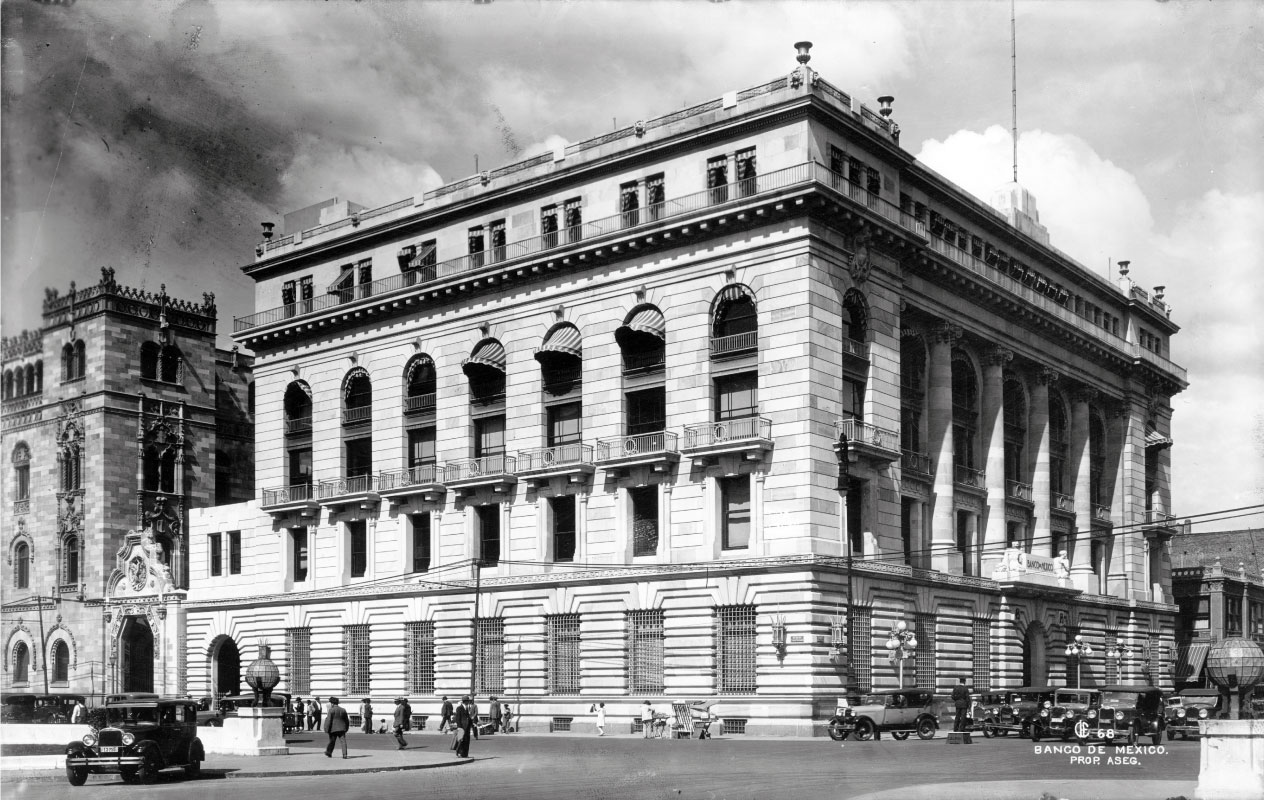
Edificio del "Banco de México"
Ca. 1920
Fototeca Nacional
D.R. Instituto Nacional de Antropología e Historia, México
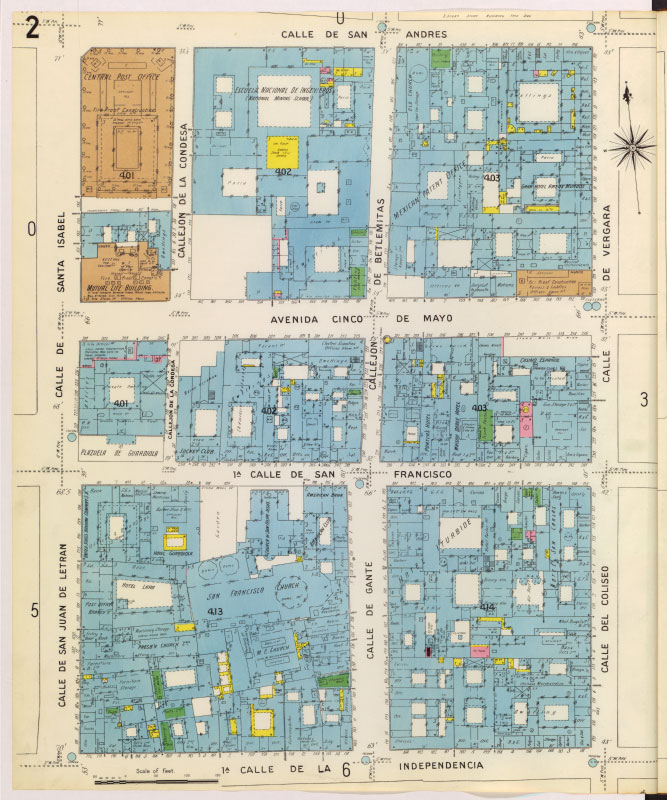
Autor desconocido
Mapa de seguros contra incendios Sanborn de la Ciudad de México, Distrito Federal, Distrito Federal (Sanborn Fire Insurance Map from Mexico City, Federal District, Distrito Federal)
Mapa. 1905
Library of Congress, Geography and Map Division, Sanborn Maps Collection
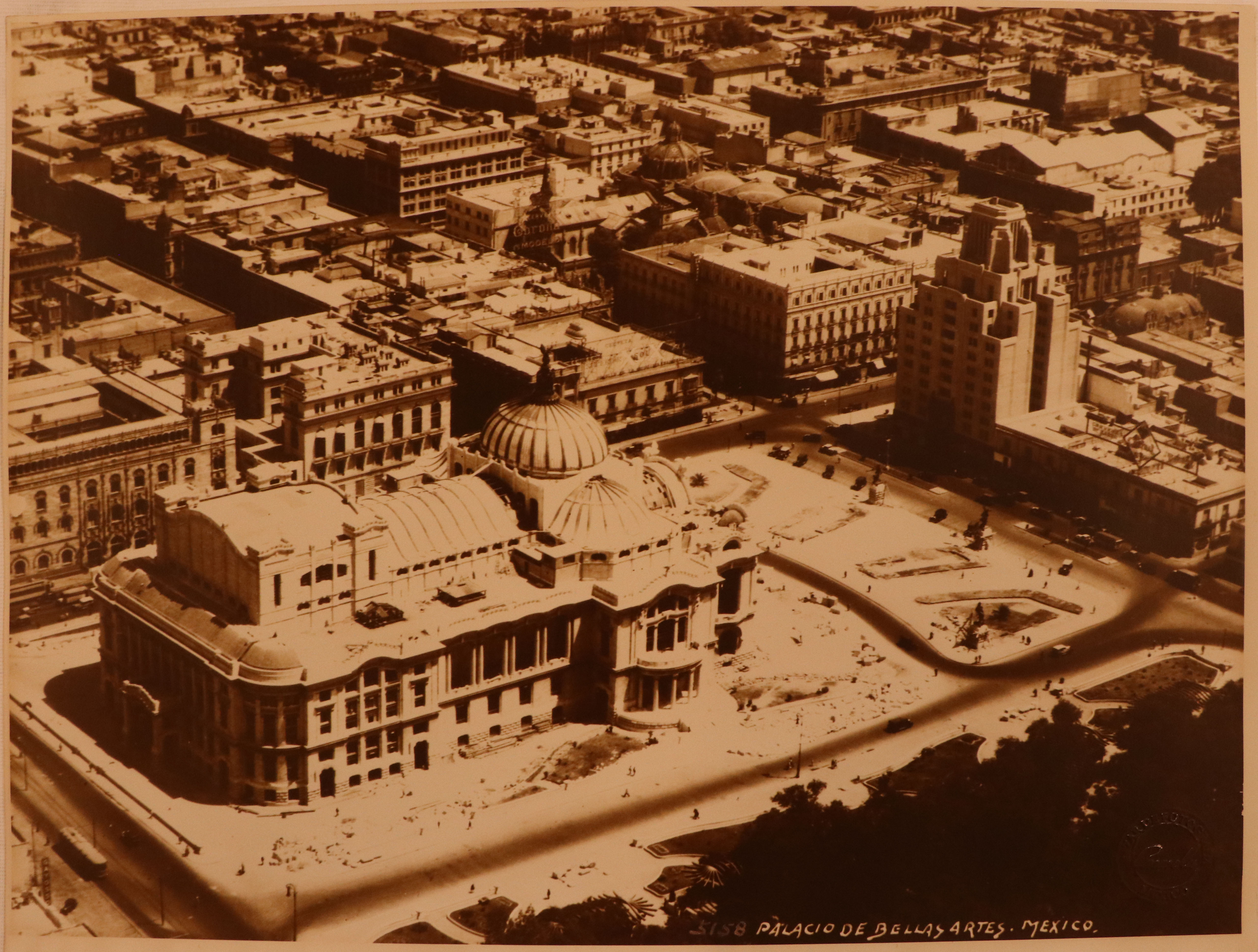
Autor desconocido
Vista aérea del Palacio de Bellas Artes
Fotografía. s/f
Colección Banco de México
The urban context, evolution of the city, and a new building
The main building has witnessed several urban transformations over the years. Initially, its strategically positioned location in an area undergoing urban redevelopment marked a significant milestone. However, the growth of both the building and the city demanded expansion. Initially, the construction of an adjacent building was considered, but due to complications with the terrain, the decision was made to acquire another property, which included the Guardiola building and two adjacent buildings. This led to the design of a new architectural landmark at the intersection of 5 de Mayo Street and Condesa Alley.
This evolution of the city was also reflected in the architectural transformation, transitioning from Porfirian influence and eclecticism to the Art Deco style and the modernist movements that became dominant in the mid-20th century.
The extension of 5 de Mayo Street, led by José Yves Limantour, was one of the many initiatives that reshaped the surrounding architecture, transforming it into a modern space. The nearby buildings transitioned from reflecting eclecticism to embracing functionalism and modernity.
Architect Carlos Obregón Santacilia made efforts to create a new plaza that would complement the main building, incorporating elements of the Art Deco style as well as precursors to other architectural movements. The design of the plaza, located in the former garden of the Guardiola building and which connected to Banco de México's sibling building, emerged as a key component of Mexico City's expanding urban landscape.


This exhibition brings together contemporary perspectives from two artists and five nationally recognized architectural firms. Collectively, these interventions guide the visitor to explore the architectural grandeur of the main building, along with various symbols associated with Banco de México, creating a connection between both the memories of the past and the present.
Artists:
- Marco Rountree
- Darinka Lamas
Architectural firms:
- PALMA
- Estudio Estudio
- Escobedo Soliz
- LANZA
- Riwa
Visit it from November 4, 2023 to February 25, 2024, at the Mezzanine of Banco de México Museum.